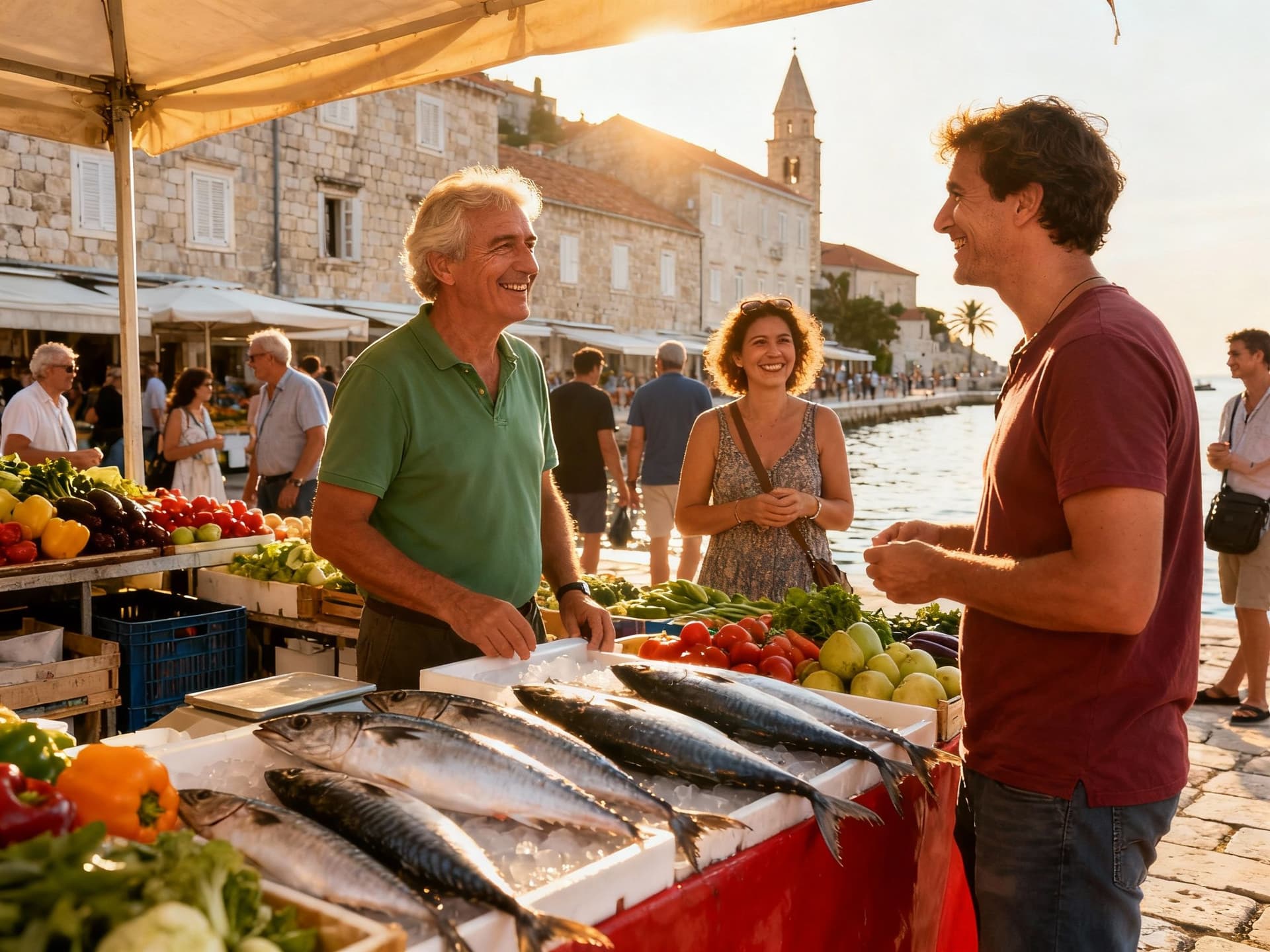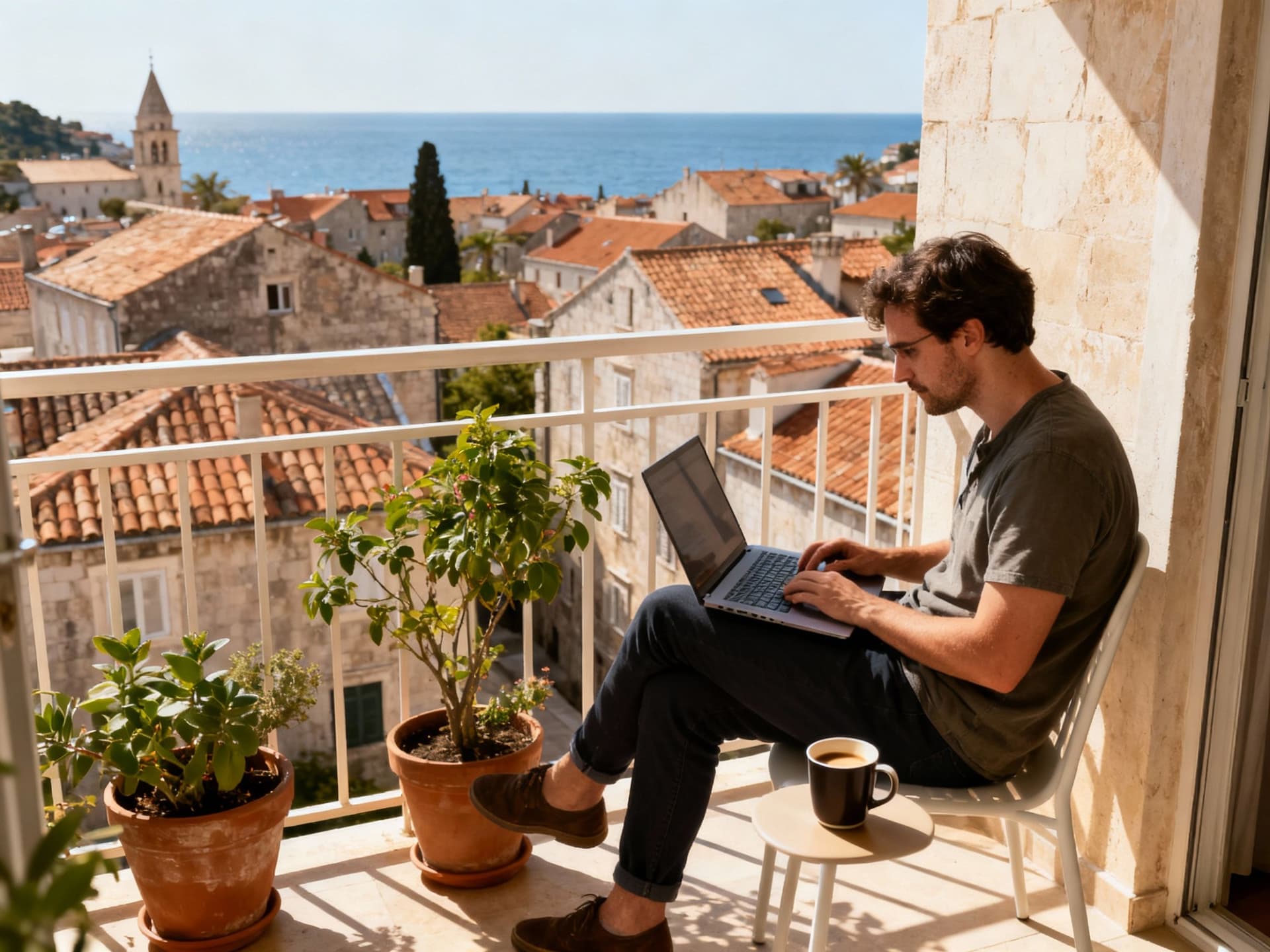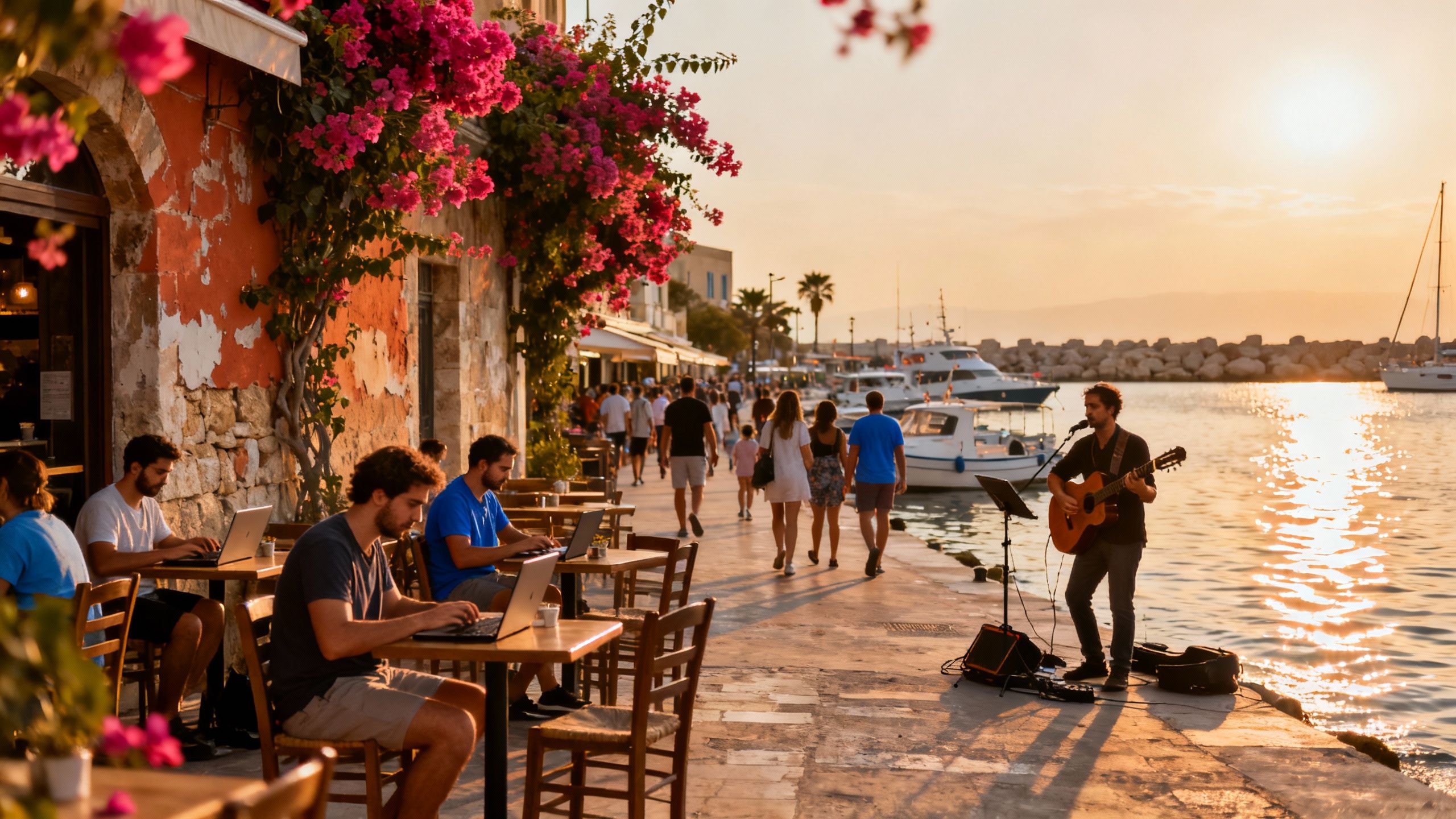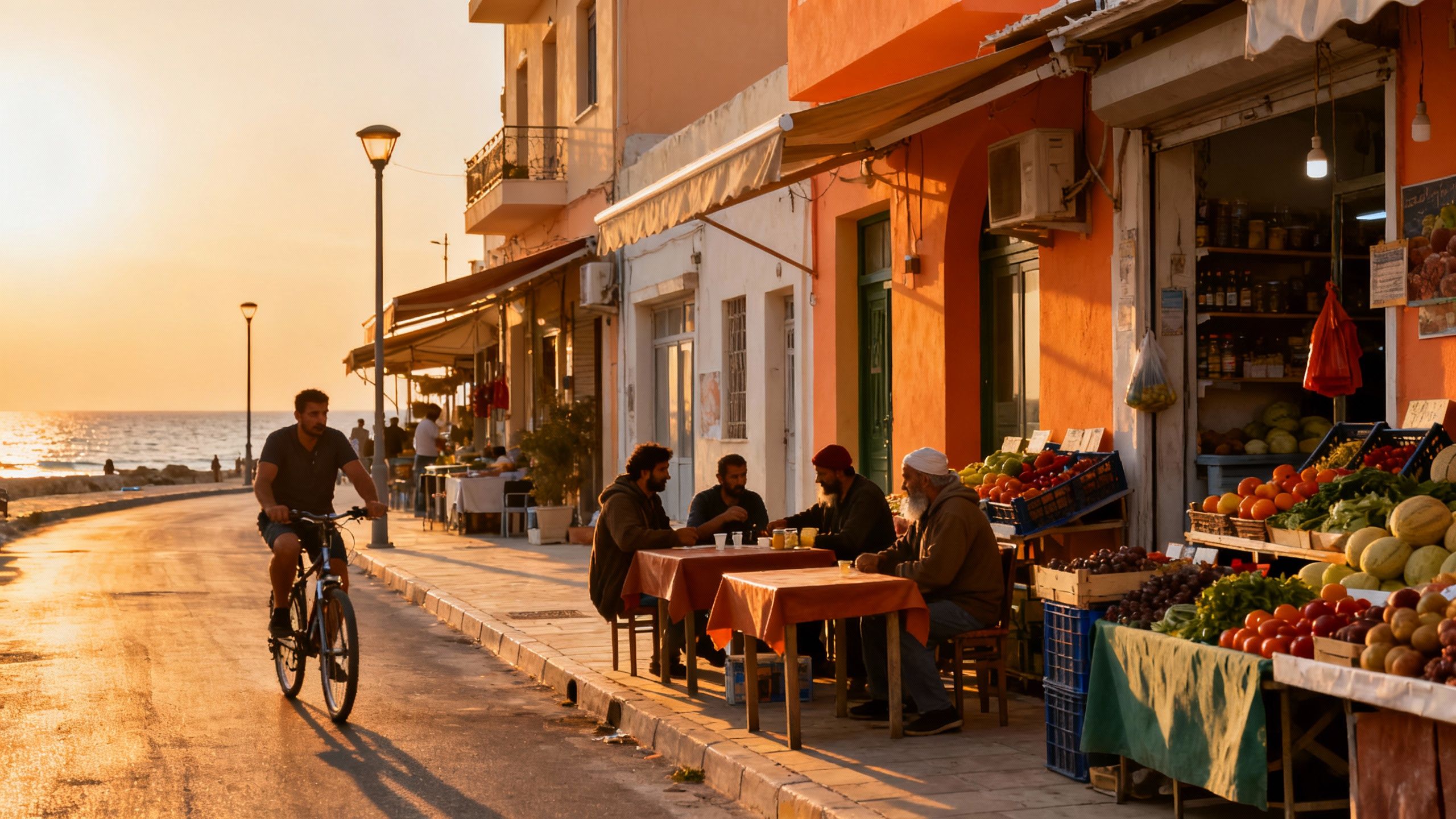How to Win Croatian Homes Without Falling for Summer Hype
Beat Croatia’s summer hype: prioritize off‑season viewings, short due‑diligence offers and local experts to secure homes that fit real year‑round life.
Imagine stepping out at sunrise to get a coffee on Split’s Riva, the limestone still warm from yesterday’s sun, then logging on from a sunlit apartment balcony. Croatia offers that slow‑bright Mediterranean rhythm — markets, ferries, festivals and a coffee culture that stretches the morning into a social hour. But love at first sight can rush decisions. If you’re buying here, the same summer energy that seduces also warps pricing, competing offers and seller expectations.
Living the Croatian life — more than a coastline

Croatia isn’t just Dubrovnik postcards. There’s Zagreb’s leafy cafés and weekday bustle; Rijeka’s working port grit turned creative quarter; and islands like Hvar and Brač where mornings are for markets and afternoons for swimming. Days here are grounded in local routines: morning coffee (kava) at a corner bar, a late market run for fresh fish or truffles, and community events that multiply in spring and autumn. That cultural texture shapes what you’ll want from a property — proximity to a market, a balcony for evening breezes, or a room you can transform into a focused workspace.
Zagreb, Split, Dubrovnik: neighbourhood vibes that matter
Zagreb’s Črnomerec and Maksimir feel family‑oriented with parks and bakeries; Split’s Varoš and Varoš Gate offer narrow lanes and quick sea access; Dubrovnik’s Ploče gives you postcard views but also premium price tags. Coastal places deliver holiday vibes and the convenience of tourist infrastructure — cafes, seasonally lively coworking spots, ferries — but they also attract short‑term rental demand that pushes asking prices. Use local neighbourhood names when talking to agents: it signals you’ve done homework and helps them hunt off‑market opportunities.
Food, festivals and the non‑summer life
Croatia’s calendar brims beyond July and August: truffle season in Istria, the Dubrovnik Festival in summer’s shoulder months and harvest events inland. These seasonal peaks shift local rhythms and can affect viewings and negotiations — sellers are often more emotional or price‑ambitious during peak tourist months. Buying with an eye for off‑season life (November markets, winter walks on quieter promenades) helps you see what living in a place year‑round really looks like.
- Lifestyle highlights to look for during visits
- Kava culture: test the neighbourhood vibe at your new local café (Zagreb’s Tkalčićeva, Split’s Riva cafés).
- Morning markets: Dolac market (Zagreb) and Split market for produce and social life.
- Ferry reliability: check seasonal ferry timetables if island access is a deal‑maker (Hvar, Brač, Korčula).
Making the move: practical considerations that protect lifestyle

House prices in Croatia have been climbing — official DZS numbers show double‑digit annual gains in recent quarters — and coastal areas often outpace inland growth. That momentum means offers made in high season can quickly become bidding wars. Instead of matching hype, plan offer timing and structure to protect your budget and the lifestyle you want: consider conditional offers, reasonable earnest money, and clauses that allow a short due‑diligence window.
Property styles and how they shape daily life
Stone townhouses in old towns give you balconies and steep stairs — gorgeous, but not ideal for heavy gear or regular deliveries. Modern apartments offer elevators and high‑speed internet setups that fit remote work. Villas deliver outdoor living but higher maintenance and seasonal utility swings. Match the property type to your actual rhythms: if you work afternoons and wander local markets in the mornings, a central apartment near cafés beats a remote villa that’s beautiful but isolating on weekdays.
Working with local experts: agencies, notaries and translators
Local agents know when owners will accept conditional deals or when a property is held for short‑term letting. A Croatian notary handles closing and official transfers; you’ll also likely need a lawyer for title searches and a translator for full contract clarity. Good agencies act as cultural translators too — explaining what a seller really means by phrases like “quick sale” or “well maintained” and spotting off‑market opportunities near lively squares or quiet streets.
- Offer steps that protect lifestyle and budget
- Visit off‑season to test daily life, then set a realistic budget including renovation and running costs.
- Ask for a short due‑diligence window in the offer (10–21 days) to verify title, utility access and internet readiness.
- Include appliance, furniture and terrace checks if lifestyle hinges on them (fast router, blackout curtains, outdoor kitchen).
- Agree penalty terms that are fair — enough to be taken seriously but not so punitive that you’re locked in if a major issue arises.
Insider knowledge: what expats wish they’d known
Expats tell the same stories: they fell for summer showings, paid over asking, then learned about off‑season realities — ferry gaps, winter heating bills, and empty‑home taxes aimed at curbing short‑term rentals. Croatia’s policy shifts on short‑term lettings and property taxes mean a buy‑to‑let plan needs careful vetting. If you want rental income, ask local agents about year‑round demand, permitted rental regimes and how recent laws affect tourist lets in your chosen town.
Cultural cues that change negotiations
Sellers in Croatia often price emotionally — a family home on the market for generations, or a stone house tied to identity — so negotiations work best when respectful, patient and slightly personal. Ask about the story of the home; a non‑confrontational offer framed around shared values (care for the property, local tenants) can go further than a cold highest‑number bid. Use a local agent to bridge tone and expectations.
Long‑term lifestyle checks before you sign
Picture daily life in winter: grocery access, medical services, transport and community events. Check internet speeds (essential for nomads), heating systems and how the building manages communal costs. If you plan to host friends, confirm guest parking and ferry schedules. These details determine whether your Croatian home supports the freedom and community you moved here for.
- Quick red flags to watch for
- Unclear land registry entries or multiple heirs listed — get a lawyer.
- No recent utility invoices — could signal seasonal disconnection.
- Excessive short‑term rental history in tourist zones — may limit long‑term living options or change tax status.
Conclusion: Croatia rewards buyers who balance romance with rules. Fall for the morning markets, the late‑night konobas and the sea‑salt air. But when it’s time to make an offer, bring structure: off‑season viewings, a short due‑diligence clause, local legal counsel and an agent who understands the life you want. Do that, and you’ll close not just a property, but a life — espresso at dawn, a hot desk by noon, a swim at sunset.
Norwegian who has helped 200+ families relocate from Oslo to Spain; expert in relocation services and community integration.


